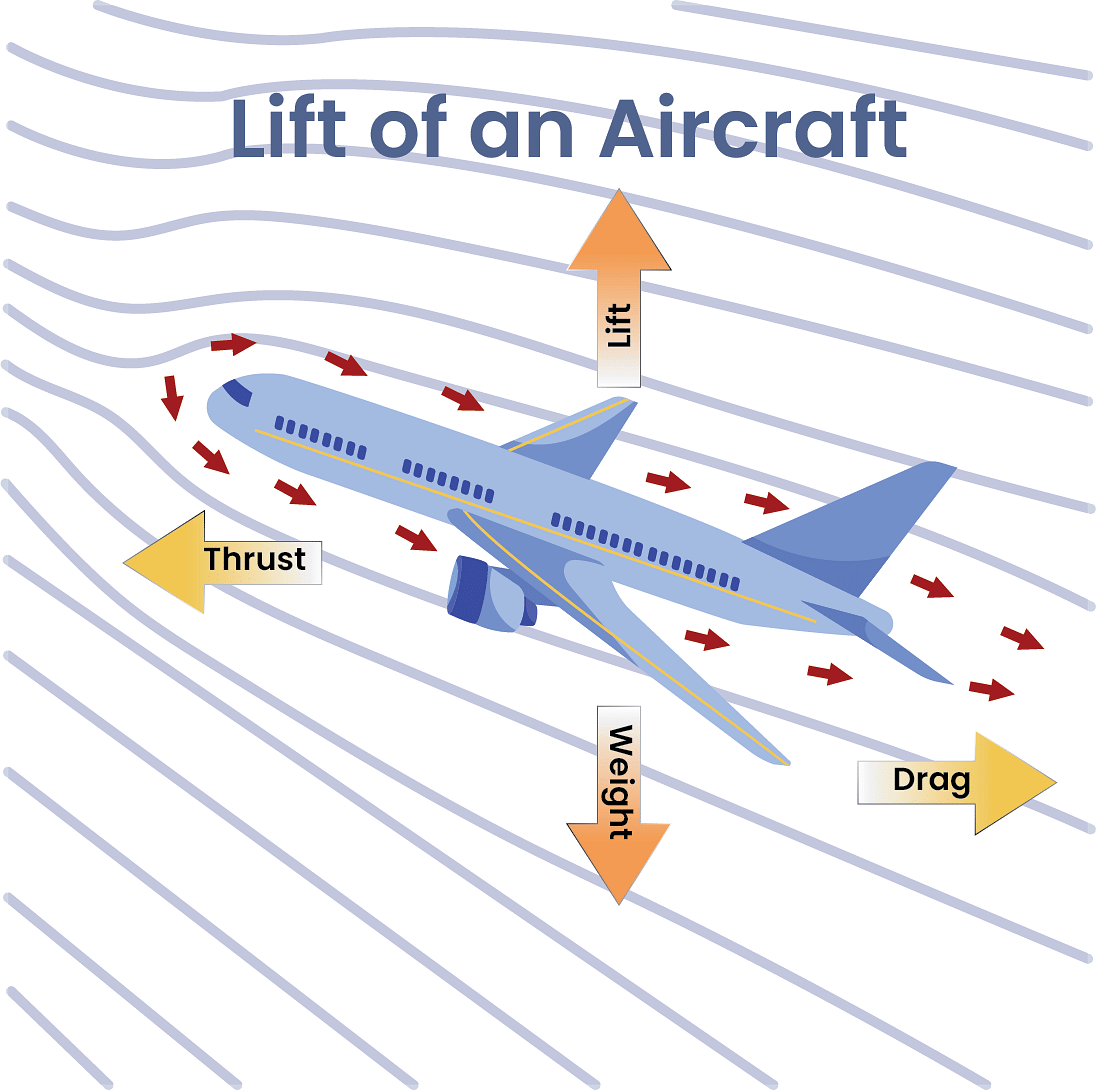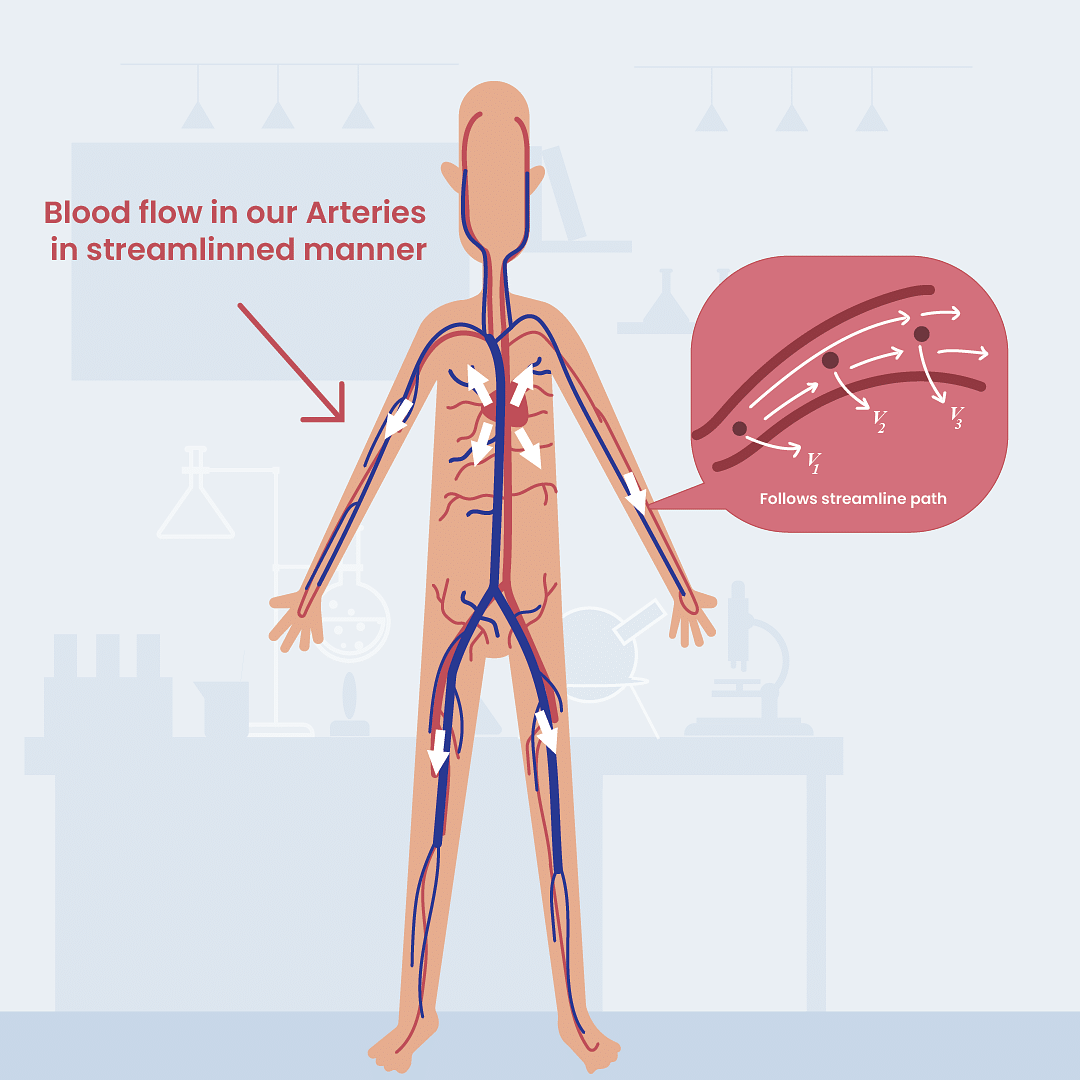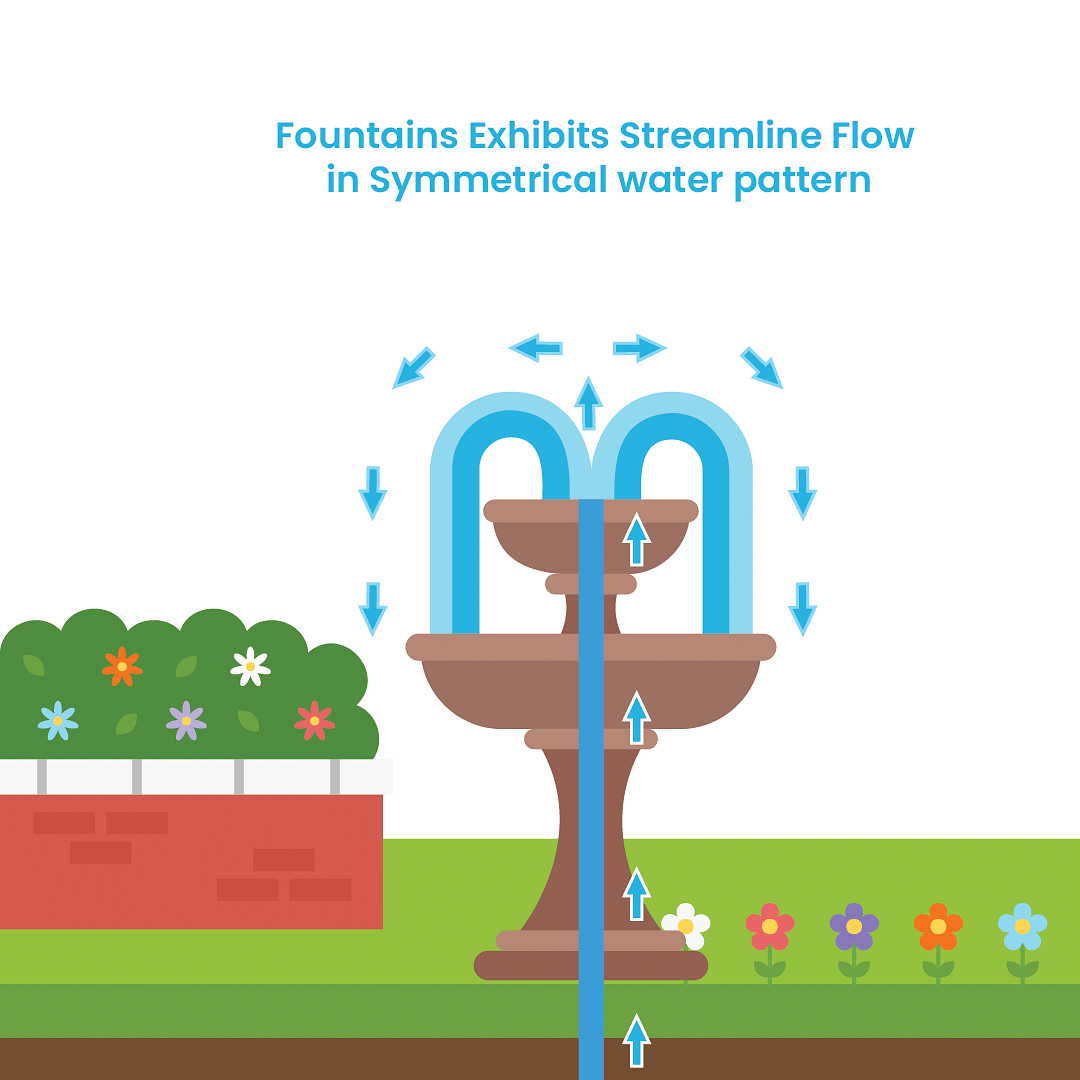Streamline flow is more likely for liquids with
Show Hint
The factors to consider for the likelihood of streamlined flow in liquids are related to their density and viscosity.
- high density and high viscosity
- low density and low viscosity
- high density and low viscosity
- low density and high viscosity
The Correct Option is D
Approach Solution - 1
The correct option is D) The critical velocity (Vc) is directly proportional to the density (ρ) and the coefficient of viscosity (η) of the liquid. Reynolds' number (R) can be calculated using the formula R = (ρ.V.d) / μ, where ρ is the fluid density, V is velocity, d is a characteristic dimension, and μ is fluid viscosity.
- Streamline flow is more likely in liquids with low density.
- Higher viscosity in a liquid leads to a greater velocity gradient.
- Streamline flow is associated with a critical velocity.
- Critical velocity is the threshold at which the flow transitions from streamlined to turbulent.
- Below the critical velocity, the flow remains streamlined.
- Above the critical velocity, the flow becomes turbulent.
Option A) A high density and viscosity result in a high Reynolds number, indicating turbulent flow.
Option B) Low density and viscosity lead to a high Reynolds number, indicating turbulent flow.
Option C) Low viscosity and high-density results in a high Reynolds number, indicating turbulent flow.
Option D) High viscosity and low-density result in a low Reynolds number, indicating streamline flow.
Therefor Option D is the correct answer.
Discover More From Chapter: Mechanical Properties of Fluids
Approach Solution -2
The correct answer is Option D) low density and high viscosity.
Real-Life Applications
Streamline flow is a phenomenon that occurs in liquids with low viscosity and high velocity. When a liquid has low viscosity, its molecules are less likely to stick together, allowing them to move freely. Additionally, the high velocity of the liquid helps maintain a smooth flow in straight lines.
In real-life, streamlined flow has the following applications:
Aircraft Design
Engineers design aircraft with streamlined shapes to reduce drag and enhance fuel efficiency during flight.
- It is essential for minimizing resistance and maximizing lift during flight.
- Thrust from the engines propels the aircraft forward, overcoming drag and maintaining streamline flow.
- Lift, generated by the wings, keeps the aircraft airborne and balanced against its weight.
- Efficient streamline flow reduces drag, resulting in better fuel efficiency and performance.
- It is achieved through aerodynamic design and optimization of the interplay between thrust, lift, weight, and drag.

Blood Flow
The blood in our arteries flows in a streamlined manner, preventing the formation of clots and ensuring smooth circulation.
- Streamline flow in blood occurs when blood flows in a straight and organized manner, without turbulence or eddies.
- Streamline flow is characterized by the even distribution of blood along the vessel walls.
- The blood particles in streamline flow move in parallel layers at constant velocity, minimizing friction and resistance.
- This type of flow is commonly observed in healthy blood vessels with no constrictions or irregularities.
- Streamline flow ensures efficient and uninterrupted transport of oxygen, nutrients, and waste products throughout the body.
- It is essential for maintaining proper blood circulation and delivering oxygenated blood to various organs and tissues.

Fountains
Water in fountains exhibits streamline flow, resulting in symmetrical water patterns.
- It is characterized by the orderly movement of water particles along well-defined paths without turbulence or eddies.
- Streamline flow creates a visually pleasing and calming effect in fountains.
- To achieve streamline flow, fountains are designed with carefully shaped nozzles or jets that direct the water in a controlled manner.

Pipes
Streamlined flow in water pipes minimizes friction, enhancing the efficiency of water transportation systems
- The streamlined flow reduces friction and pressure loss, allowing water to move quickly and efficiently.
- To achieve streamlined flow, the pipe's inner surface should be smooth and free from roughness or irregularities.
- Turbulent flow, on the other hand, causes energy losses and reduces the overall efficiency of the system.

The question can also be asked as:
- What are the characteristics of liquids that are more likely to exhibit streamline flow?
- What factors affect the likelihood of streamline flow in liquids?
- What are the advantages of streamline flow in liquids?
- How can streamline flow be achieved in liquids?
Approach Solution -3
Streamline flow is a concept in fluid dynamics that describes smooth and organized fluid movement.
- It is characterized by low turbulence and a predictable flow pattern.
- The behaviour of fluid in streamlined flow depends on properties such as density and viscosity.
Streamline Flow and Reynolds' Number:
- Reynolds' number determines the nature of the flow, whether it is streamlined or turbulent.
- Calculated using R = (ρ.V.d) / μ, where ρ is the fluid density, V is fluid velocity, d is a characteristic dimension, and μ is fluid viscosity.
- Reynolds' number provides insights into the type of flow observed.
Also Check:
Related Concepts | ||
|---|---|---|
Density and Streamline Flow:
- High-density fluids tend to have higher Reynolds numbers, indicating a likelihood of turbulent flow.
- Turbulent flow is characterized by irregular motion and increased resistance.
Viscosity and Streamline Flow:
- Viscosity refers to a fluid's resistance to flow.
- Fluids with low viscosity experience smoother movement and are more conducive to streamline flow.
Relationship between Density and Viscosity:
- High-density and low-viscosity fluids are more likely to exhibit turbulent flow.
- Low-density and high-viscosity fluids favor streamline flow.
Density and viscosity play key roles in determining the type of flow observed. Reynolds' number helps assess whether a fluid exhibits streamline or turbulent flow.
Similar Questions
- A fluid is in streamline flow across a horizontal pipe of variable area of cross section. For this which of the following statements is correct?
- A flow of liquid is streamline if the Reynolds number is
- A horizontal pipe line carries water in a streamline flow. At a point along the pipe where the crosssectional area is 10 cm, the water velocity is 1 ms and the pressure is 2000 Pa.
- Water is flowing through a very narrow tube. The velocity of water below which the flow remains a streamline flow is known as
- A liquid flows through two capillary tubes fitted horizontally side by side to the bottom of a vessel containing liquid.
Learn with videos:
Top Questions on mechanical properties of fluid
- A cylindrical pipe has a radius of \( 0.1 \, \text{m} \). If the speed of water flowing through the pipe is \( 2 \, \text{m/s} \), calculate the volume flow rate of water through the pipe.
- MHT CET - 2025
- Physics
- mechanical properties of fluid
- A pipe has a radius of 2 cm at one end and 1 cm at the other end. The velocity of the water at the wider end is 5 m/s. What is the velocity of the water at the narrower end, assuming incompressible flow?
- MHT CET - 2025
- Physics
- mechanical properties of fluid
- A fluid of density \( 800 \, \text{kg/m}^3 \) is flowing through a pipe of varying cross-sectional area. The velocity of the fluid at point A is \( 2 \, \text{m/s} \), and the velocity at point B is \( 4 \, \text{m/s} \). If the cross-sectional area at point A is \( 1 \, \text{m}^2 \), find the cross-sectional area at point B.
- MHT CET - 2025
- Physics
- mechanical properties of fluid
- Water is being poured at the rate of 36 m$^3$/min into a cylindrical vessel whose circular base is of radius 3 meters. Then the water level in the cylinder increases at the rate of:
- MHT CET - 2025
- Physics
- mechanical properties of fluid
- Water flows through a pipe with velocity \( V_1 = 3 \, \text{m/s} \) where the area of the pipe is \( A_1 \). What is the velocity \( V_2 \), where the diameter of the pipe is half of that at area \( A_1 \)?
- KEAM - 2025
- Physics
- mechanical properties of fluid
Concepts Used:
Mechanical Properties of Fluid
The science of the mechanical properties of fluids is called Hydrostatics. A fluid is a substance that relents to the slightest pressure. Fluids are categorized into two classes famed by the names of liquids, and elastic fluids or gases, which later comprehend the air of the atmosphere and all the different kinds of air with which chemistry makes us acquainted.
Streamline Flow:
A streamline is a curve the tangent to which at any point provides the direction of the fluid velocity at that point. It is comparable to a line of force in an electric or magnetic field. In steady flow, the pattern of the streamline is motionless or static with time, and therefore, a streamline provides the actual path of a fluid particle.
Tube of Flow:
A tubular region of fluid enclosed by a boundary comprises streamlines is called a tube of flow. Fluid can never cross the boundaries of a tube of flow and therefore, a tube of flow acts as a pipe of the same shape.
Surface Tension and Viscosity:
The surface tension of a liquid is all the time a function of the solid or fluid with which the liquid is in contact. If a value for surface tension is provided in a table for oil, water, mercury, or whatever, and the contacting fluid is unspecified, it is safe to consider that the contacting fluid is air.


